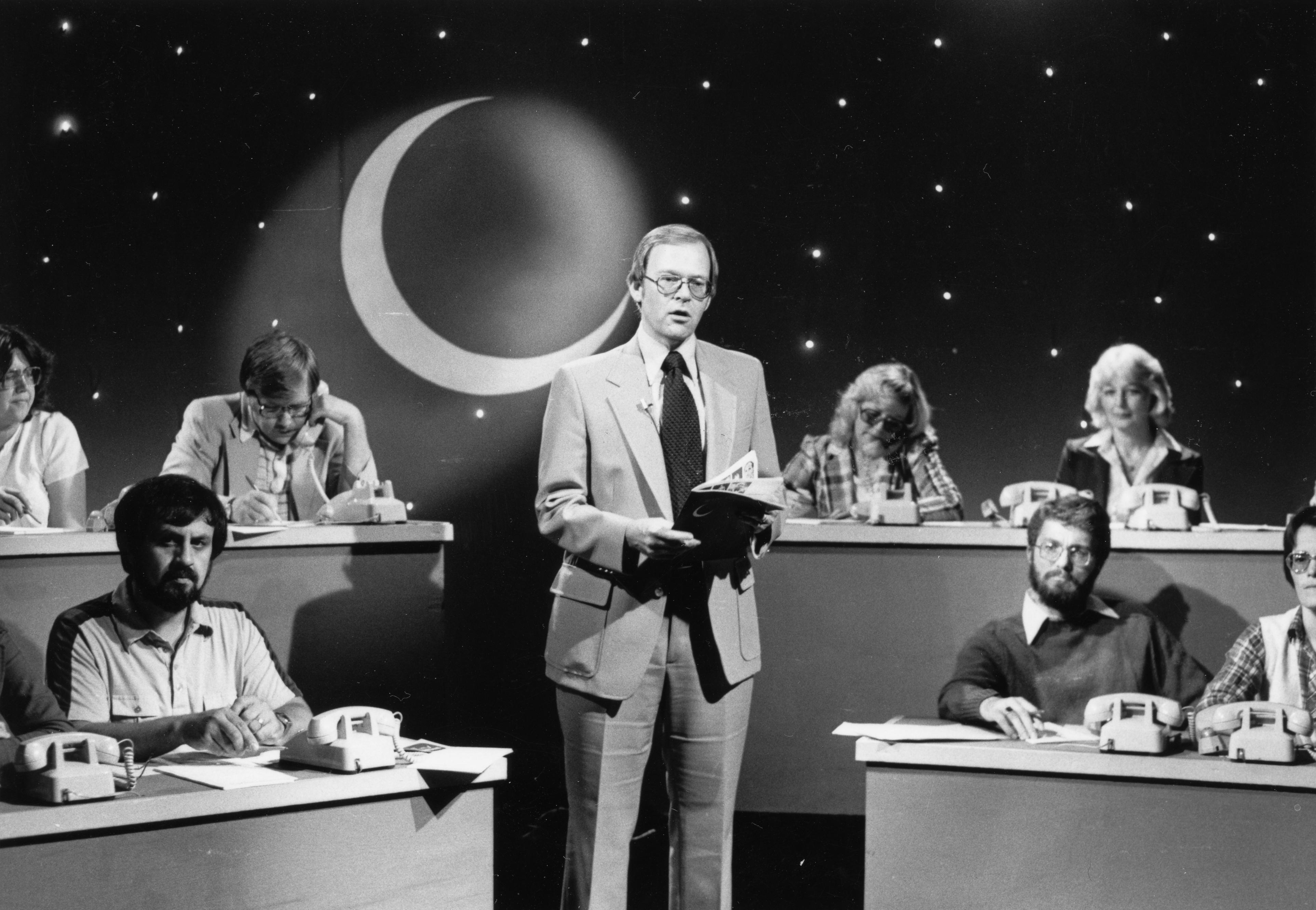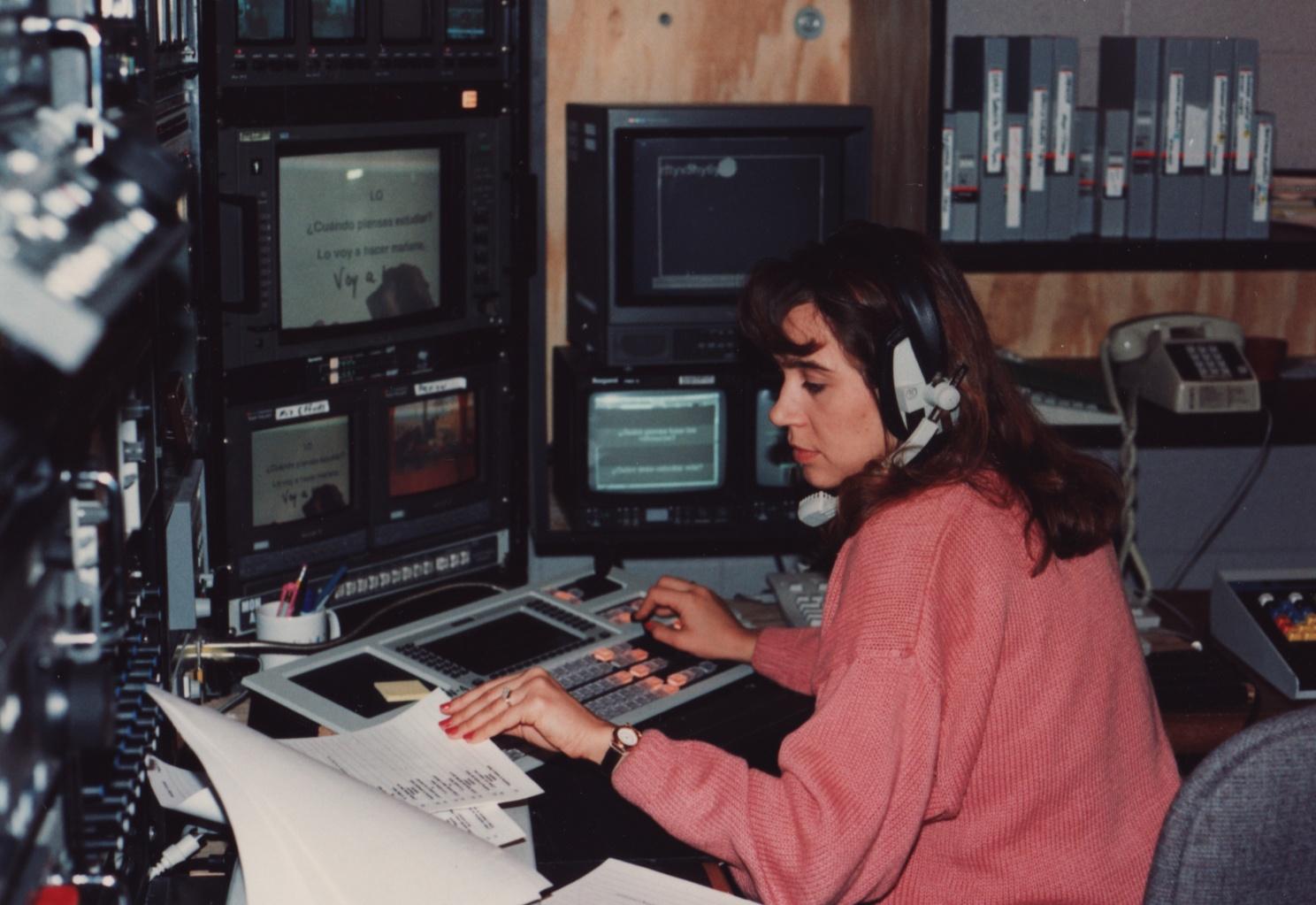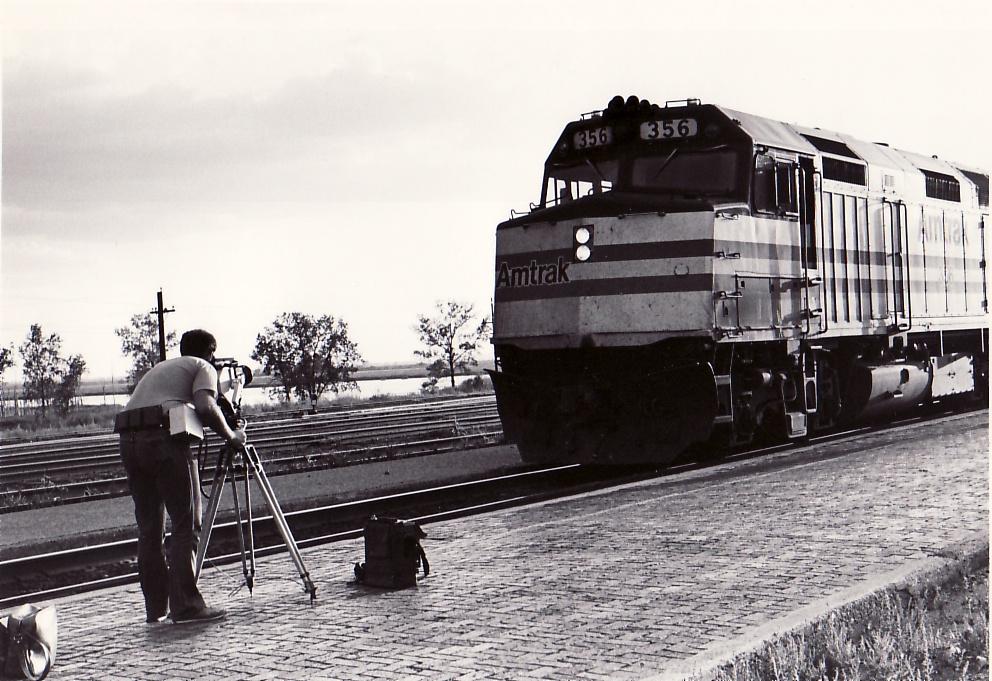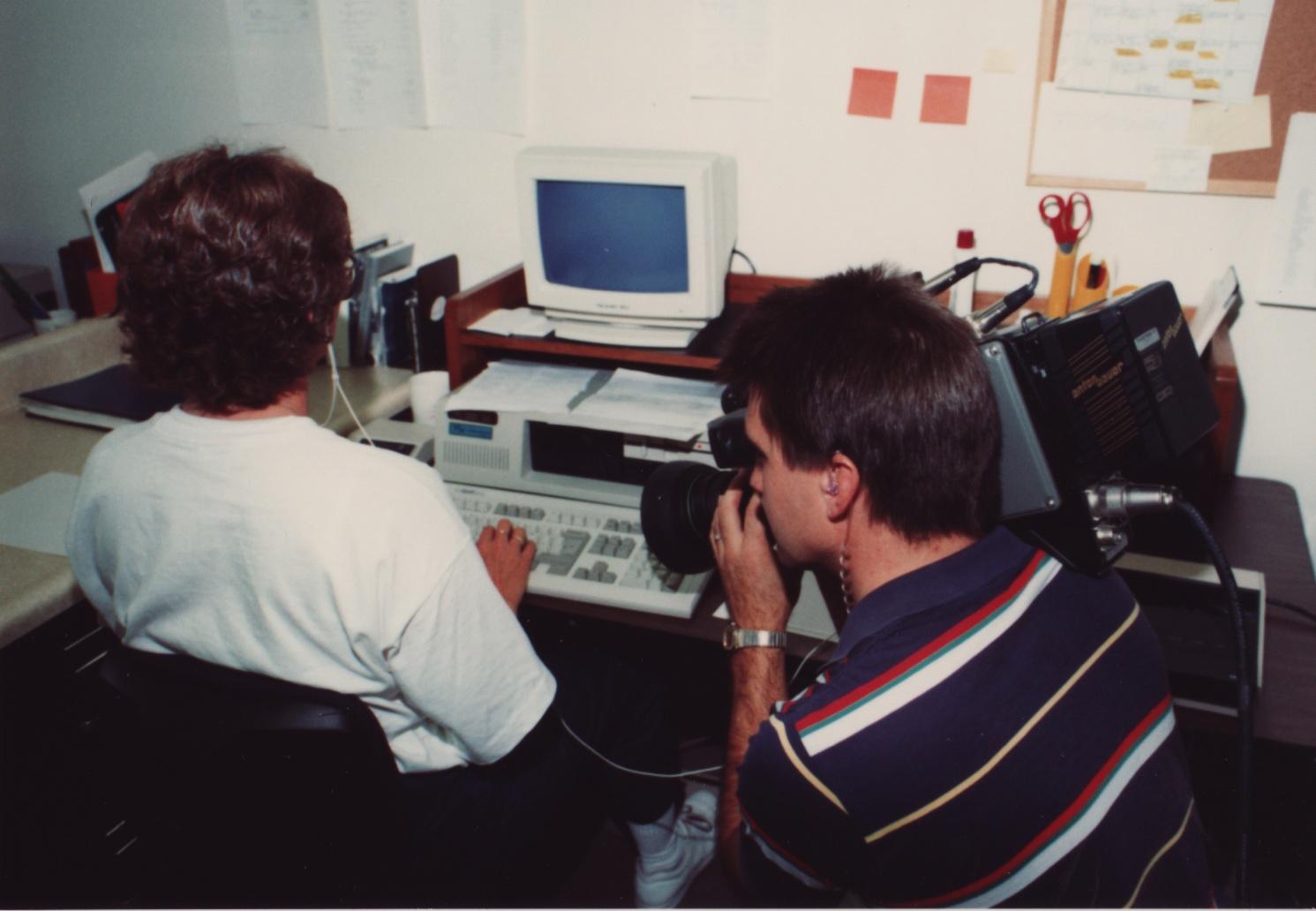
1990
Dennis Falk was honored by the National Association of Public Television Stations for his effective grassroots communication with his members of congress on behalf of public television.
Prairie News Journal was launched.
Prairie Town Meeting became the first of a series of innovative television projects funded through federal grants looking at how television can aid rural development.
1991
State funding from North Dakota increased to its highest level since 1982.
The Board of Directors amended the mission statement: Prairie Public Broadcasting will provide for the people of its viewing and listening area an indispensable radio and television programming service that educates, entertains, informs and enlightens.
¡Hablemos español!, Prairie Public’s live interactive Spanish language program, premiered.
1992
Total staff was 111 full-time and 372 part-time.
KJRE/Channel 19 signed on. Licensed to Ellendale, ND, the transmitter is located near Kulm. The transmitter effectively made Prairie Public television available to all of North Dakota.
Prairie Town Meeting-Business Edition continued the format of the earlier town meeting programs but concentrated on how to start and expand businesses.
1993
Prairie Public launched KidZone, a lively, fun and innovative approach for scheduling and promoting children’s programs. The effort received lauds from The Children’s Television Workshop, the distributor of Barney & Friends, and Mister Rogers’ Neighborhood.
KPRJ/91.5FM signed on, bringing Prairie Public Radio to Jamestown, and becoming the fifth station in Prairie Public’s radio network.
Dennis Falk, Prairie Public president and general manager for 22 years, was named Public Television’s “Manager of the Year” by the PBS Board of Directors and received North Dakota Broadcasting Association’s highest honor, the Pioneer Award, for his role in pioneering a statewide television and radio network. Shortly after, he lost his two-year battle with cancer.
1994
Prairie Public members established the Dennis L. Falk Local Production Endowment Fund at the FM Area Foundation.
Prairie Satellite Network was completed with 70 downlinks dishes across North Dakota, providing access to distance learning within 30 miles of every North Dakota resident.
Prairie Online implemented an online service that provided access to information and discussion for North Dakotans.
1995
Pyramids on the Prairie won a Distinguished Service Award from Heritage Winnipeg.
1996
Under a grant from the U.S. Department of Commerce, Prairie Public Radio completed a seven-city expansion with translators in Beach, Bowman, Crosby, Harvey, Hettinger, and Tioga, ND, and Plentywood, MT.
Rivers, Roads, Rails and Air, North Dakota’s transportation story, premiered.
Kathleen A. Pavelko was appointed President & CEO.
1997
Board, staff, and management worked to create a comprehensive three-year financial recovery and strategic plan. The mission was amended: Prairie Public Broadcasting provides indispensable radio, television and communication services that educate, entertain, inform, and enlighten the people of the prairie region.
Prairie Public served as the uplink for national news coverage of the region’s spring flooding.
After eight years, Prairie News Journal completed its final season.
1998
The Mennonites of Manitoba premiered.
1999
Prairie Public celebrated its 35th anniversary.
The Germans from Russia: Children of the Steppe, Children of the Prairie premiered.
Prairie Public Cooks! premiered with “P is for Pasta.” ”S is for Soups and Stews” soon followed.
The Germans from Russia: Children of the Steppe, Children of the Prairie won the first of many awards: the Silver “Telly.”
Prairie Quilts premiered, produced by Prairie Public’s Kim Stenehjem.



